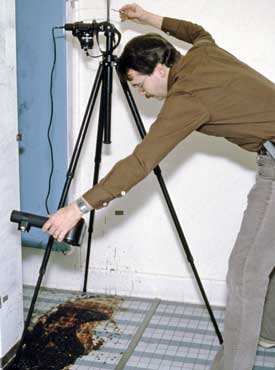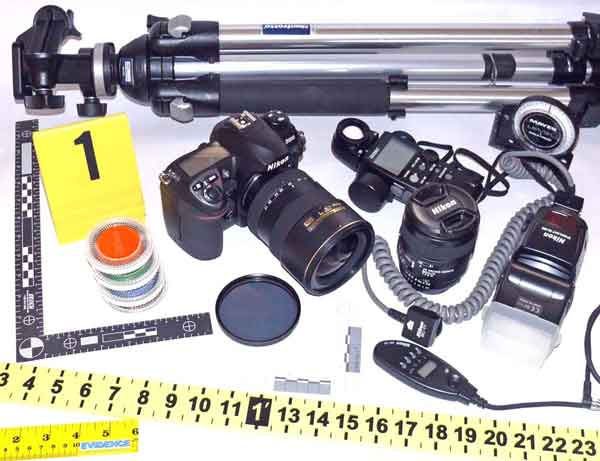Which Method Is Appropriate to Use When Photographing Evidence
One of the simplest tasks of a trial lawyer is to get a photograph admitted into evidence but I have seen some painful exercises as lawyers strive mightily against repeated objections in their task. Start photographing with a close-up of the injury c.
Ad Review real photographer profiles see prior experience compare prices in one place.

. Photographs taken by the X-ray process are admissible in evidence after proper preliminary proof of their correctness and accuracy has been produced. The use of an alternate Light Source ALS or oblique lighting may be necessary. Always photograph from eye-level and keep a photo log.
And methods used to deliver poisons and poison residues in blood tissues and organs. The testimony of the X-ray expert who had taken the skiograph tended to show that the picture correctly represented the condition of the heart of the appellee. Approximate by zoom setting with other cameras Take lots of photographs.
Label each photograph with the patients name and DOB b. Show all openings windows and doors. Photographing the Evidence pages 12 18 Use colour photography where possible.
When photographing the scene always remember to take overall medium and close up shots before you begin your comparison photographs. Photograph the impression marks immediately using. The Linear Coordinate or Baseline Method and Triangulation.
ADMITTING A PHOTOGRAPH INTO EVIDENCE. Biological evidence trace materials and evidence of a fragile nature should be collected first. Evidence with numbered evidence placards and scales wcase information.
Digital photography however is fundamentally different from conventional photography. Using quantitative analysis works better if you want to confirm or test something a theory or hypothesis Using qualitative research works better if you wish to understand something concepts thoughts experiences For most research topics you can choose between qualitative quantitative or mixed methods approach. Alternate light sources ALS Light sources such as colored filters lasers and blue or green lights are often used in forensic photography for illumination and detection of obscure evidence such as latent fingerprints.
Using these types of tools requires teachers to skillfully attend to and interpret a childs work and talk often in a moment filled with the buzz of a classroom full of young children Jacobs et al. Turn off the lights before the photography begins d. Teachers often use observation tools or checklists to record evidence of childrens thinking Fennell Kobett Wray 2017.
Entrance into the interior scene. First photograph evidence wo numbered evidence placards. Always use a relationship technique when relating footwear evidence to the crime scene or to other items of evidence.
A variation of the Baseline Method which is known as the 90 Degree Method is typically used for indoor scenes. For the capture of images for use with an automated Facial Recognition Systems. Trace evidence identified Trace evidence can be removed with tweezers and placed into appropriate packaging Trace evidence can also be removed with tape lifts Packaging must be appropriately sized designed so that this small evidence cannot fall out of the container Packaging.
If using a SLR camera use a 50mm lens or zoom setting. Photographs should be taken directly at right angles eliminating probable distance distortions for clear visualization and each part of evidence should be photographed with scale to signify size and without scale to show relationship with overall scene. All you need to do is try different lighting methods while looking in the cameras viewfinder and select the method that gives the best results.
Persons are photographed for reasons including administrative identification documentation of injuries notation of identifying marks dress or evidence located on the person or clothing. Long range medium range and close-ups. Evidence as it relates to the scene.
The method chosen will depend upon the specific geography of the scene and the availability of reference points. Punctual knowledgeable best of all it turned out great. Take a close-up photograph with and without a scale.
If items are discovered in the latter stages of the processing methodology eg during second or third rechecks ensure that appropriate photos are created. An easy way to do this is to place a numbered marker next to the evidence print and photograph. It seems appropriate as digital imaging becomes more common and more affordable to ask whether existing safeguards in the rules of evidence are well suited to verify the integrity of visual evidence captured and stored in digital form.
January 24 2011 2 Comments. Collection methods used to gather and package this crime scene evidence vary. Which method is appropriate to use when photographing evidence.
Appropriate physical evidence helps an officer determine the accuracy of statements from. Since most laboratory photography is made with steady burning lights quartz lamps photoflood lamps fluorescent lamps etc it is relatively easy to choose the best lighting method for photographing a specific item of evidence. Set camera to give a field of view close to that of the human eye.
Use photoevidence placards whenever possible to clearly differentiate the various items of evidence from one another. Photographing Living Persons 101. Only two things are required to be shown.

Crime Scene And Evidence Photography Evidence Photography At The Crime Scene


Comments
Post a Comment